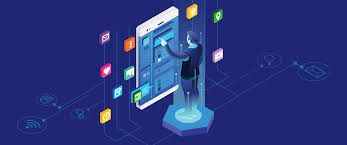26 of the 48 state Medicaid agencies studied could not report the number of “critical incidents” — such as abuse, neglect or exploitation.
You are here
The tech user experience today – the customer does not matter
 Has the tech user experience substantially improved? For years device and software tech ‘improved’ to a point of widespread optimism about our tech future. Certainly access has improved: Ninety-five percent of Americans use the Internet and more than 80% have broadband at home. Today there are numerous programs to subsidize access, and smartphone penetration has exceeded 92%. One would believe this ubiquity of access might make us hopeful that we are now in the era of tech helping consumers of all ages, no matter what task or level of knowledge.
Has the tech user experience substantially improved? For years device and software tech ‘improved’ to a point of widespread optimism about our tech future. Certainly access has improved: Ninety-five percent of Americans use the Internet and more than 80% have broadband at home. Today there are numerous programs to subsidize access, and smartphone penetration has exceeded 92%. One would believe this ubiquity of access might make us hopeful that we are now in the era of tech helping consumers of all ages, no matter what task or level of knowledge.
Or has the tech user experience also deteriorated? According to research interviewees from multiple reports, the user experience across multiple categories of technology is on the decline, and in some cases the drop in customer experience quality is precipitous -- will conversational AI help? Here are examples, some drawn from the current research into the topic:
- Replacing people in service businesses with kiosks. Restaurants and health facility check-in are but two examples. Watch the customers at a bakery avoid the two kiosks to wait to place their orders with a server. Listen to the manager at a McDonald’s describe his distaste for the kiosk menu process. Perhaps there is an ‘empathy gap’ with self-service kiosks? Watch the patients in the waiting room struggle with the kiosk check-in menus – while staffers on the other side of the window busy themselves with other tasks.
- Credit card payment devices placed on tables so that you can check yourself out. Customers may not be used to the concept – but with a QR code or a payment device, customers can pay the bill (presumably leaving a tip) and depart – yet another opportunity to disconnect the actual service from the customer. Watch the servers in Chili’s help the customer with the QR-coded menu on their phone warning them – ‘it’s best to use only one phone at the table to order or the food will arrive at different times!’ Of course the payment could also occur at different times and with different tips. Customers in groups are confused about what to do (or where to find iced tea.).
- The patient portal(s) --- one for every insurer and medical practice. Today, many patients are signing onto the portal to view their test results. So now many health systems are charging for use of online portals that provide a way to engage with the physician, for example, responding to messages in MyChart, the EPIC software portal.
- QR code to access programs for performances. This includes the biography of the performers, the names of each of the pieces or acts, and the absence of one-time advertisers. Instead, the audience at the matinee, average age 80, needs help in finding the program details – ‘what is the next piece?’ and ‘where are the programs?’ question to the ushers. Switching to QR code access, with a 1-page program sheet (possibly) at the hall – makes it easier and cheaper for the organization (as with all QR code adoption), but the customer experience is confusing, especially when the lights go down and announcement warns to switch off phones.
- The difference in interfaces between phone and computer versions of apps. Have you noted those missing personalization features, and difficult-to-find choices in the same Gmail app on a smartphone versus on a computer? With 75% market share in the US, it is fair that most see this app in one form or another. But the resemblance between smartphone and PC version? See for yourself. Now compare versions (and functionality) of banking apps. And so on and so forth. Within a few years we will have diminished expectations about the tech customer experience, and like the frog in cold water, we will no longer notice how poor product and website design has become.
